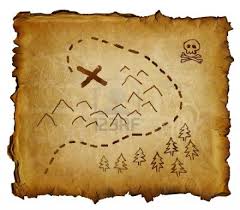Webster's Universal Encyclopedic Dictionary (2002)
creativity: the ability to create
creative: 1~ marked by the power or ability to create
create: 4~ to produce through imaginative skill
For a writer, creativity is a good trait to have. It helps him write a short story, a novel, a poem. With imagination and the ability to create, almost any author has the potential to become published. Blessed with enough creativity, a writer can distinguish himself from the pack and climb to the top of the pyramid. He or she can become a best-selling author.
But with criminals, there is an additional definition from that same dictionary which they find useful for their purposes.
creative: 3~ managed so as to get around legal or conventional limits
For some criminals, it is this third definition that makes them into successful law breakers, while others get so caught up in their supposed genius ideas that they fail to realize some of the flaws in their thinking and thus end up spending time in a grey-bar hotel. A poster boy for this latter group is the person mentioned by Eve Fisher a couple of months back in her blog about prison conditions. Eve referred to a prisoner who stated that whenever he walked into a room, he knew he was the smartest guy in the room. Eve's comment in reply was that the bar wasn't set very high.
Based on the above two paragraphs, it appears that the good trait of creativity also has a dark side. To look into this situation, various researchers set up studies to evaluate the subject of creativity. While examining the relationship between creativity and personality, researchers Silvia, Haufman, Palmon and Wiggert found that those with lower levels of honesty and humility reported more creative accomplishments and also reported engaging in more creative activities. Who knew? At this point, more research was called for.
 |
| one sample of Visual Perception Task |
Participants were told they would earn a certain amount of money for choosing the left side triangle as having the most dots, but would earn ten times the amount for choosing the right side triangle as having the most dots. Clearly, the left side triangle had the most dots in fifty of the one hundred samples. In the other fifty samples, some of the dots were clustered closer to the line in order to make the count more ambiguous as to which side contained the most dots. In the ambiguous samples, the participants could more easily "misconceive" the number of dots contained in the right side triangle and thus earn more money. And, those participants who had been tested earlier and found to have more creativity were also found to have a higher level of "misconceiving" the number of dots on the right side.
The result of Gino and Ariely's second study showed that creativity is a better predictor of dishonesty than was intelligence. Thus, I guess, just because you're smart doesn't mean you are also creative, and conversely just because you're lower on the IQ scale doesn't mean you don't have a creative ability.
Their third study showed that people who enter a creative mindset were motivated to think outside the box and this is what led to increased levels of dishonesty. Their fourth study went a step further and showed that the creative mindset led to a justification for their cheating which led to their increased levels of dishonesty. Their fifth study went out into the real world with surveys to employees across seventeen departments. In those departments requiring more creativity in their jobs, the participants disclosed they were more apt to respond to proposed scenarios in an unethical way in order to benefit themselves.
Bottom line: It looks like creativity tends to help people work out original ideas to get around rules by letting them interpret information in a way to benefit themselves while rationalizing their actions. Sounds like most of the characters in my stories, not to mention the criminals I met while working the streets.
Anyway, getting back to authors, I'm going to assume all you writers out there are those creative people on the honest side. As for myself, well, several years ago Rob Lopresti did me a computer software favor and I promised to buy him a beer. Now, here we are three Bouchercons down the road and I still haven't bought him that beer. I could justify my lack of action by saying that I heard Rob doesn't drink, and somewhere in the back of my mind I do think I heard him say something to that effect, but then maybe I'm merely being creatively dishonest. Therefore, to slip into a more creatively CYA mindset, I will now go on record as offering to buy Rob the beverage of his choice at the Raleigh Bouchercon. This offer does not include Dom Perignon. I can't really slide that one past my tax accountant, seeing as how he seems to get a little funny at tax time when he looks at my expense receipts.
So remember my motto: Given enough time, I can explain anything. They just need to give me enough time.









 I don't know why, but it gets more difficult for me to get to the SleuthSayers site or our Sandbox. What I get most of the time is a message that says that page is not available. or that site is not available. Or I get my name and it says I'm unknown, even though I'm signed in on google blog. It sometimes takes me 30 to 40 minutes just to figure out how to get here.
I don't know why, but it gets more difficult for me to get to the SleuthSayers site or our Sandbox. What I get most of the time is a message that says that page is not available. or that site is not available. Or I get my name and it says I'm unknown, even though I'm signed in on google blog. It sometimes takes me 30 to 40 minutes just to figure out how to get here.























